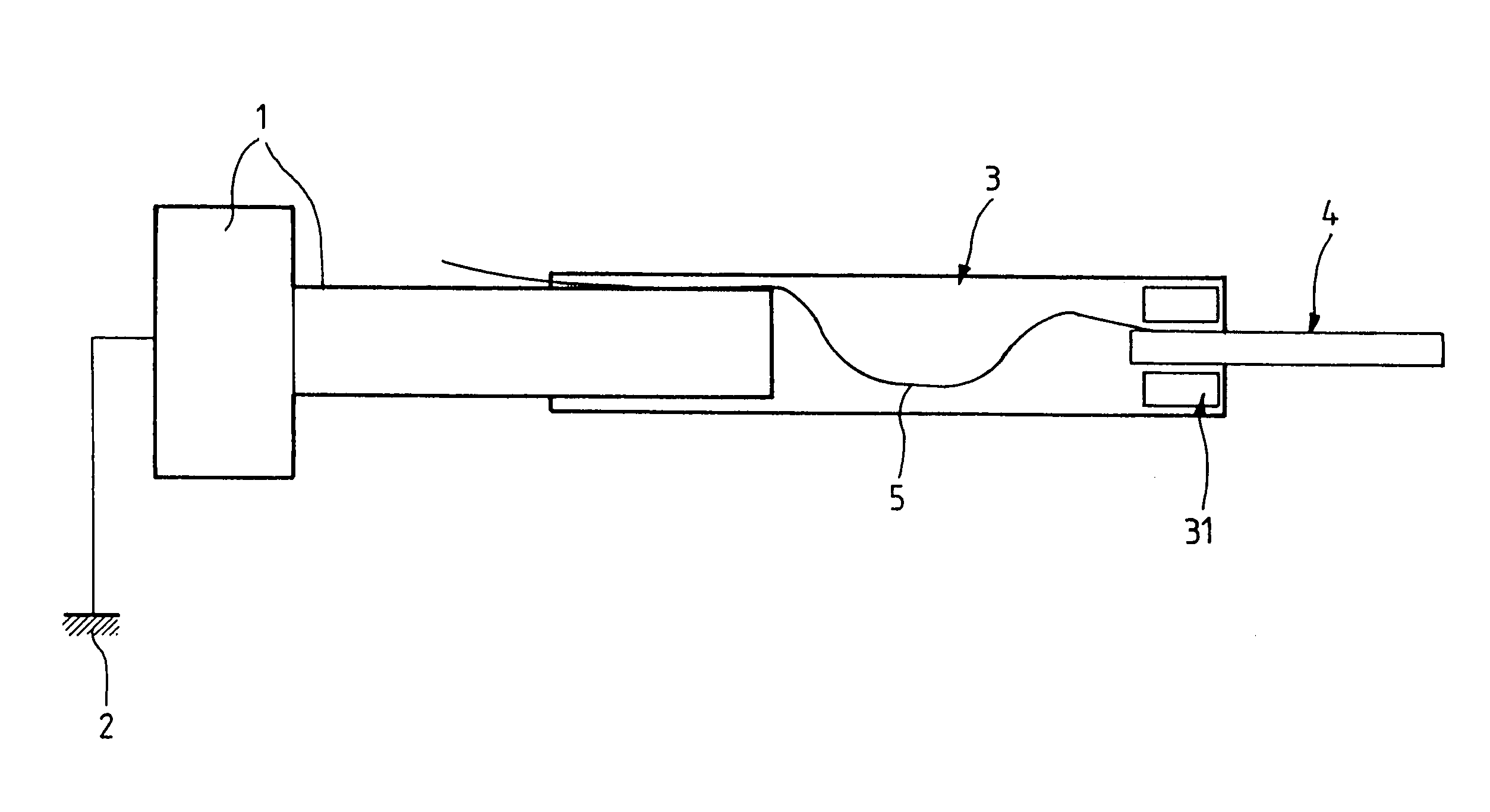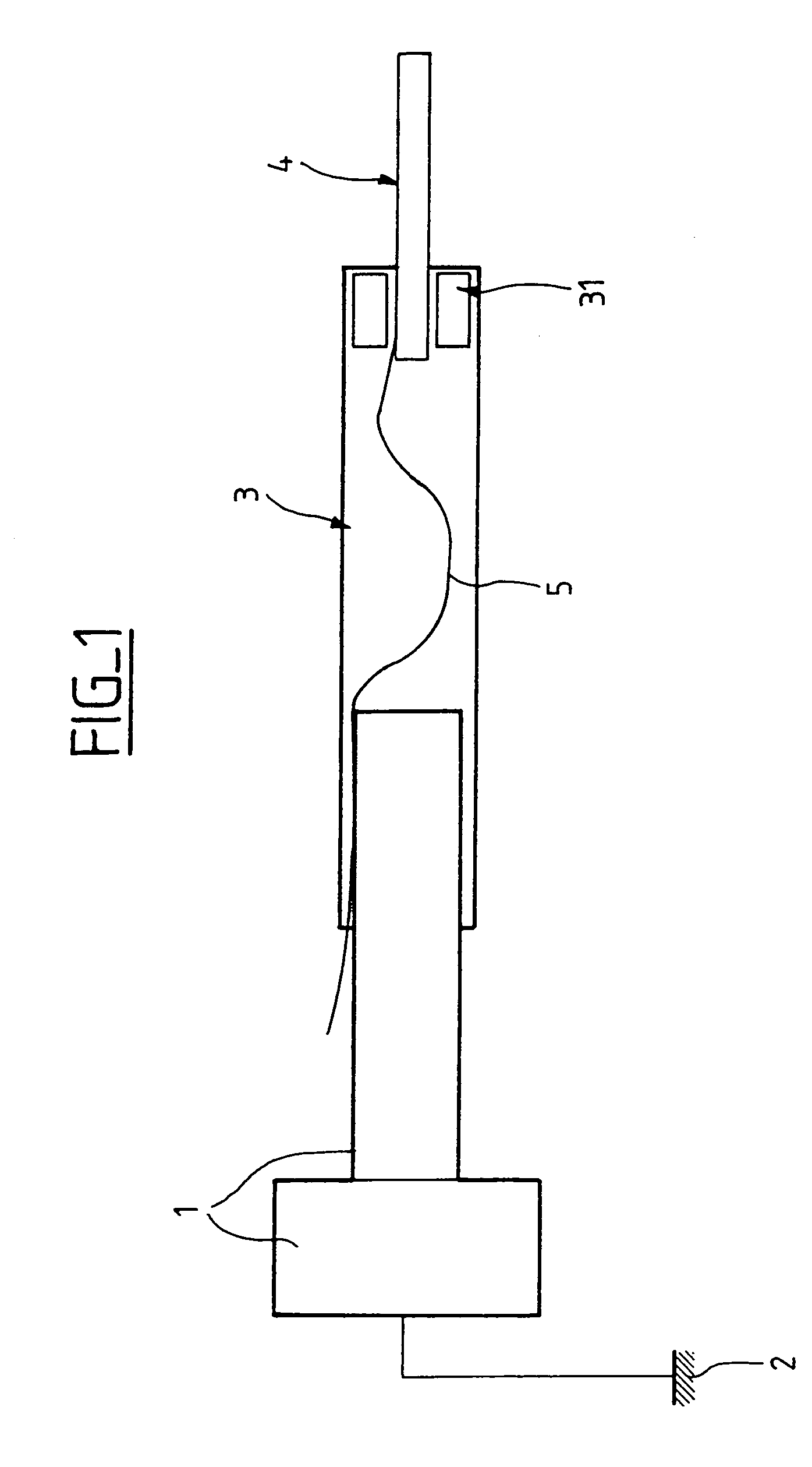Inductive thermal plasma torch
- Summary
- Abstract
- Description
- Claims
- Application Information
AI Technical Summary
Benefits of technology
Problems solved by technology
Method used
Image
Examples
Embodiment Construction
[0019]FIG. 1 is a diagramatic representation of a view in section of an ignition device for a cold-cage torch according to the invention. The ignition device comprises a support comprising on the one hand an electrically conductive end 1, which is connected to ground 2 of the plant, and on the other hand an electrically insulating end 3, which carries an igniter 4 for initiating the plasma in the torch. The igniter 4 is supported by the electrically insulating end 3. A calibrated electrically conductive connection 5 connects the igniter 4 to the electrically conductive end 1 of the support.
[0020]In one detailed embodiment, provided merely by way of example, the igniter 4 is held on the electrically insulating end 3 of the support by way of a high-temperature mesh tape 31. The electrically conductive end 1 is made of stainless steel (inox). The electrically insulating end 3 is a quartz tube. The igniter is made of graphite. The calibrated electrically conductive connection 5 is a cop...
PUM
| Property | Measurement | Unit |
|---|---|---|
| Diameter | aaaaa | aaaaa |
| Diameter | aaaaa | aaaaa |
| Electrical conductivity | aaaaa | aaaaa |
Abstract
Description
Claims
Application Information
 Login to View More
Login to View More - R&D
- Intellectual Property
- Life Sciences
- Materials
- Tech Scout
- Unparalleled Data Quality
- Higher Quality Content
- 60% Fewer Hallucinations
Browse by: Latest US Patents, China's latest patents, Technical Efficacy Thesaurus, Application Domain, Technology Topic, Popular Technical Reports.
© 2025 PatSnap. All rights reserved.Legal|Privacy policy|Modern Slavery Act Transparency Statement|Sitemap|About US| Contact US: help@patsnap.com


